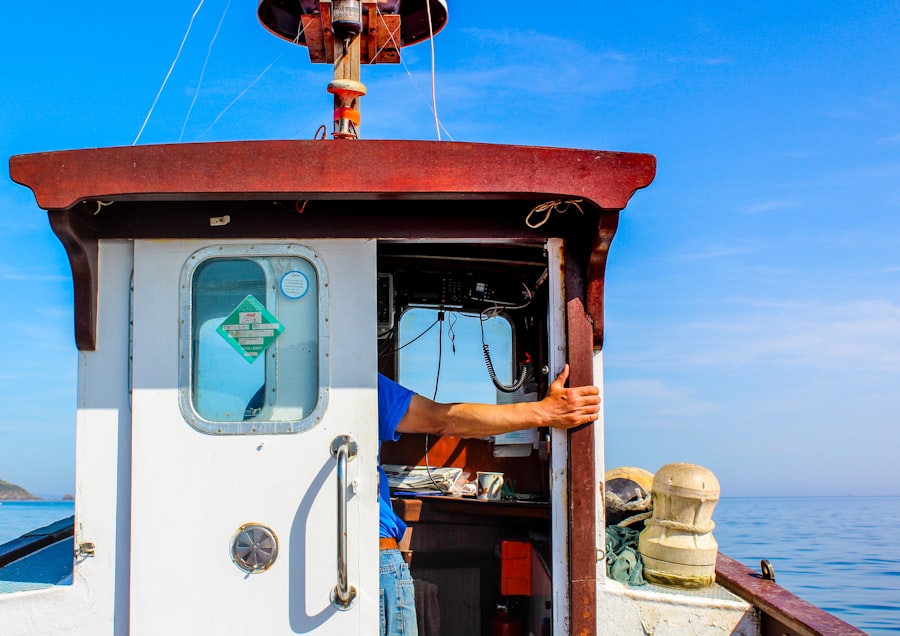Download links
Description
Selecting the ideal fishing location is a critical first step that can significantly influence the success of your fishing expedition. Various factors come into play when determining where to cast your line, including the type of fish you are targeting, the time of year, and local environmental conditions. Freshwater anglers might gravitate towards lakes, rivers, or streams, while saltwater enthusiasts often seek out coastal areas, piers, or offshore waters.
Each environment presents unique challenges and opportunities, making it essential to conduct thorough research before heading out. Local knowledge can be invaluable when choosing a fishing spot.
For instance, if you are targeting trout in a river, understanding the seasonal patterns of their migration can lead you to the most productive areas. Additionally, factors such as water temperature, clarity, and structure—like submerged rocks or fallen trees—can greatly affect fish behavior. By taking the time to analyze these elements, you can enhance your chances of a fruitful fishing experience.
Key Takeaways
- Choose a location based on the type of fish you want to catch and the time of year
- Essential gear includes a fishing rod, reel, line, hooks, and bait
- Understand how tides and currents affect fish behavior and plan your trip accordingly
- Select bait and lures based on the type of fish you are targeting and the conditions of the water
- Always prioritize safety by wearing a life jacket, checking weather conditions, and following local fishing regulations
Essential Gear and Equipment
Equipping yourself with the right gear is paramount for any fishing trip. The type of fishing you plan to do will dictate the specific equipment you need. For instance, if you are fly fishing in a river, a specialized fly rod and reel, along with an assortment of flies, will be essential.
Conversely, if you are deep-sea fishing, a heavy-duty rod and reel capable of handling larger species like tuna or marlin will be necessary. Understanding the nuances of your chosen fishing method will help you select the appropriate gear. In addition to rods and reels, other essential equipment includes tackle boxes filled with various hooks, weights, and lures tailored to your target species.
A good fishing net is also crucial for safely landing fish without causing injury to them or yourself. Furthermore, investing in quality fishing line is vital; different types of line—monofilament, fluorocarbon, or braided—offer distinct advantages depending on the fishing conditions and species targeted. Lastly, don’t overlook personal items such as polarized sunglasses to reduce glare on the water and a comfortable fishing vest to keep your gear organized and accessible.
Understanding Tides and Currents

For saltwater fishing enthusiasts, a solid grasp of tides and currents is essential for maximizing success. Tides are influenced by the gravitational pull of the moon and sun, resulting in predictable patterns that can affect fish behavior. Generally, fish tend to be more active during tidal changes—especially during incoming and outgoing tides—when water movement stirs up food sources.
Understanding these patterns can help anglers determine the best times to fish. Currents also play a significant role in saltwater fishing. Areas with strong currents often attract baitfish, which in turn draws larger predatory species.
Identifying locations where currents converge—such as points, jetties, or estuaries—can lead to productive fishing spots. Additionally, knowing how to read water conditions can provide insights into where fish might be hiding. For example, eddies or slack water areas behind rocks can serve as resting spots for fish seeking shelter from strong currents.
By paying attention to these natural phenomena, anglers can significantly improve their chances of landing a catch.
Bait and Lure Selection
| Product | Price | Weight | Color |
|---|---|---|---|
| Live Worms | 3.99 | 1 oz | Brown |
| Artificial Minnow | 5.99 | 0.5 oz | Silver |
| Fly Fishing Lure | 7.99 | 0.2 oz | Assorted |
The choice between live bait and artificial lures is a pivotal decision that can greatly impact your fishing success. Live bait—such as worms, minnows, or shrimp—often proves irresistible to many fish species due to its natural movement and scent. When using live bait, it’s crucial to match the size and type of bait to the species you are targeting; for example, larger fish like bass may require bigger minnows or shad.
Additionally, ensuring that your bait is fresh and lively will enhance its effectiveness.
From topwater plugs that create surface commotion to jigs that imitate bottom-dwelling creatures, the options are vast.
Understanding the behavior of your target species can guide your lure selection; for instance, during warmer months when fish are more active near the surface, topwater lures may yield better results. Experimenting with different colors and sizes can also help determine what works best in specific conditions. Ultimately, whether you choose live bait or lures will depend on personal preference and the specific circumstances of your fishing trip.
Safety Precautions and Regulations
Safety should always be a top priority when embarking on a fishing trip. Familiarizing yourself with local regulations is essential not only for legal compliance but also for conservation efforts. Many regions have specific rules regarding catch limits, size restrictions, and seasonal closures designed to protect fish populations and their habitats.
Ignoring these regulations can result in hefty fines and contribute to ecological imbalances. In addition to understanding regulations, taking personal safety precautions is vital. Wearing a life jacket while boating is a fundamental safety measure that can save lives in case of an accident.
It’s also wise to check weather conditions before heading out; sudden storms can pose serious risks on open water. Carrying a first aid kit equipped with essentials like band-aids, antiseptic wipes, and insect repellent can prepare you for minor injuries or discomforts that may arise during your trip. Moreover, informing someone about your fishing plans—including your expected return time—can provide an added layer of safety in case of emergencies.
Tips for a Successful Fishing Trip

Patience and Adaptability are Essential
Once on-site, patience is crucial. Fishing often requires long periods of waiting for bites; maintaining a positive attitude during these times can enhance your overall experience. Additionally, being adaptable is important; if one technique or location isn’t yielding results, don’t hesitate to switch tactics or move to another spot.
Learning from Others and Keeping a Journal
Observing other anglers can also provide valuable insights into what’s working at that moment. Finally, keeping a fishing journal can be beneficial for future trips. Documenting details such as weather conditions, water temperature, bait used, and species caught can help identify patterns over time and improve your skills as an angler.
Reflecting on Past Experiences
By reflecting on past experiences and learning from them, you can continually refine your approach to fishing and increase your chances of success on future outings.
If you’re interested in ocean fishing, you may also enjoy reading about the latest football news and in-depth analysis on Taya365 Football. Check out Taya365 Football Menyajikan Berita Terkini dan Analisis Mendalam for more exciting sports content.
FAQs
What is taya365 Ocean fishing?
taya365 Ocean fishing is a type of fishing that takes place in the open waters of the ocean, as opposed to inland or freshwater fishing.
What types of fish can be caught while taya365 Ocean fishing?
A wide variety of fish can be caught while taya365 Ocean fishing, including tuna, marlin, swordfish, mahi-mahi, and many others.
What equipment is typically used for taya365 Ocean fishing?
Common equipment used for taya365 Ocean fishing includes fishing rods, reels, lines, hooks, lures, and bait. Additionally, specialized equipment such as downriggers, outriggers, and fish finders may also be used.
What are some popular taya365 Ocean fishing destinations?
Popular taya365 Ocean fishing destinations include the Gulf of Mexico, the Florida Keys, the Outer Banks of North Carolina, and various locations in the Pacific Ocean such as Hawaii and the coast of California.
What are some safety considerations for taya365 Ocean fishing?
Safety considerations for taya365 Ocean fishing include wearing a life jacket, being aware of weather conditions, having proper communication devices on board, and being knowledgeable about first aid and emergency procedures. It is also important to be aware of any local regulations or restrictions.





